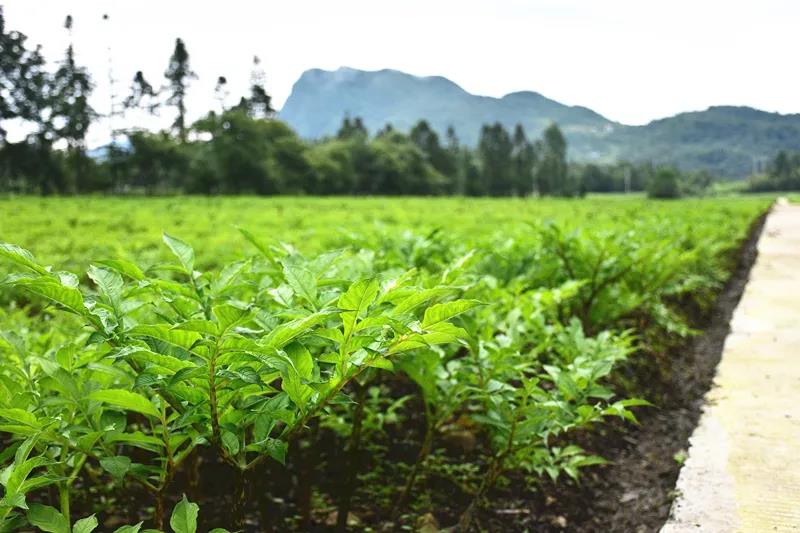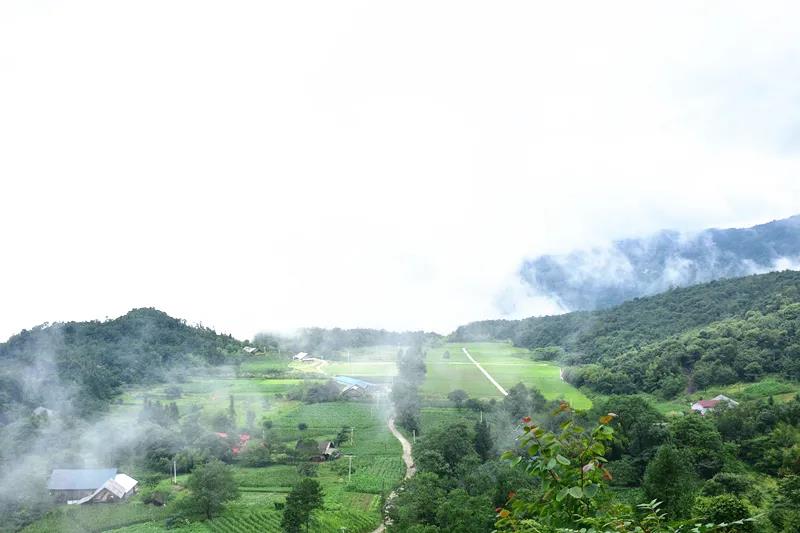With the accumulation and improvement of various actual planting experiences, we will update the technical text of konjac planting almost every year. As a national company specializing in the research, cultivation and management of konjac seeds, we hope to help the majority of konjac growers improve the konjac planting level and reduce the risk of konjac planting by sharing our practical experience in the konjac seed production base. Of course, although we try to avoid "talking on paper", due to the complexity of the agricultural planting environment and conditions, our text can still only be used as a reference, because any act of propagating the text does not conform to the principle of "adjusting measures to local conditions", but some Experience still has considerable reference value. I also hope that you who read this text will share your good experience in the comments.

1. Preparation before sowing
1. Choose a place. In western Hubei, the suitable altitude is 800-1400m. Choose light sandy loam with deep soil layer, loose soil, rich organic matter content, water and fertilizer, and no water accumulation. The pH value of the soil should be between 6.5 and 7.0. (It is particularly important to ensure that the selected fields do not accumulate water. According to the information collected by the dedicated seed industry survey, due to the heavy rainfall in 2020, many growers have caused greater losses due to the accumulation of water. Soil problems are often It can be improved by various means, but if the terrain is prone to accumulation of water, it is basically difficult to solve the problem fundamentally in the field management in the later stage.)
2. After confirming the taro field, deep plowing in winter, before plowing the land, sprinkle about 50 kg of quicklime per mu for soil disinfection. (Of course, unless necessary, more lime is not the better, too much lime will easily affect the pH of the soil.)
3. Use 10-150g healthy seed taro to eliminate disease, rotten and damaged taro. (Hubei Zhili Seed Industry Co., Ltd. specializes in cultivating konjac seeds. The konjac seeds that have been dehydrated and disinfected and coated have a high germination rate and strong disease resistance. They are the best choice for large-scale development of konjac cultivation.)
4. Fertilizer preparation: prepare fermented and decomposed farmyard manure, 1500-2000kg per mu; or choose 10-15 bags of organic fertilizer per mu. In addition, 50kg potassium sulfate (pure sulfur-based) compound fertilizer is applied per mu.

2, the main points when sowing
1. Planting time:
In the range of 800-1000m above sea level, the planting time is about early to mid-April. Generally, planting starts when the 10cm thick soil layer on the ground stabilizes above 15℃, and the planting should be postponed correspondingly when the altitude rises. (In areas below 1000m above sea level, you can sown before the year, but it needs to be covered to prevent freezing.)
2. Disinfect before broadcasting:
Sprinkle ternary disinfectant powder (quicklime+vegetable ash+sulfur powder) on the selected taro stalls before planting. (If you choose Hubei Zhili Seed Industry that has been disinfected and dehydrated and coated, you don’t need to disinfect again.)
3. Planting method:
Row spacing: 45cm for seed taro within 50g; 50-55cm for seed taro of 50-100g; 55-65cm for seed taro of 100g-150g. The groove depth is more than 15cm. For planting taro within 100g, three rows of konjac of each type are used to make one row of corn. For planting taro above 100g, two rows of konjac for each type are used to make one row of corn. (Of course, plots with adequate shading do not need to be interplanted with corn.)
Plant spacing: Sow the seeds at 5 times the diameter of the planted taro.
sowing:
1) Ditching in the north-south direction, the bottom is covered with decomposed farmyard manure + potassium sulfate (pure sulfur-based) compound fertilizer;
2) Cover with 2-3cm fine soil to cover up the fertilizer (so that the fertilizer and the taro will not be in direct contact);
3) Plant the taro, place the top bud of the taro slightly inclined to avoid water in the bud nest causing the bud nest to rot. If it is a taro whip, place the top bud in one direction;
4) Cover soil in rows (deep furrows and high ridges, this is very important).
4. Grass control:
After sowing, use a closed herbicide to spray the field surface to prevent weeds (the specific dosage is subject to the instructions). The early control of grass has a significant impact on the later field management and yield, and special attention is needed.
5. Coverage:
Finally, cover the ridge surface. You can choose mold-free dry straw, wheat straw, dried chaff, rape husk, dead leaves, etc. The thickness is about 5 cm. There are many benefits of mulching, which are critical to the success or failure of konjac cultivation, so I will not discuss them one by one here.

3. Key points of field management
1. Fertilization:
Try to ensure the application of plantar fertilizer and avoid top dressing. If the plants are short of fertilizer during the swelling period, urea + potassium dihydrogen phosphate can be used for foliar spraying. The dosage of urea is strictly controlled within 2.5kg per mu.
2. Weeding:
Pre-emergence weeding, artificial weeding or spraying with closed herbicides can be used. Post-emergence weeding, if weeds grow luxuriantly, spray quizalofop, etc. on the weeds with 4-5 leaves. When spraying, try to avoid spraying directly on the konjac plants. Do not weed manually after the plants have loosened their leaves. If the konjac plant grows vigorously and there are not many weeds, don't weed it.
3. Pest control:
A. The disease of konjac is mainly to prevent:
1) Choose healthy and disease-resistant varieties of taro; 2) Disinfect the seed; 3) Disinfect the field; 4) Use mature farm manure or bio-organic fertilizer; 5) Prevent water accumulation in the field; 6) Apply foot fertilizer to avoid Topdressing, apply more potassium fertilizer and less nitrogen fertilizer; 7) Cover cultivation, intercropping for shade; 8) Try to remove weeds before the leaves of the plants are scattered, and do not manually weed them in the later period.
B. Konjac diseases and control methods:
1) Soft rot: Mainly manifested as rot with foul smell. The leaflets of the plant appear water-soaked dark green spots at the beginning of the onset, and the half of the leaves of the plant are yellow, commonly known as "half wind". Later the whole compound leaf rotted and fell down. Prevention and treatment methods: Once the disease occurs, there is no medicine to cure the diseased plant. The measures taken are to completely pull out the diseased plants, take the package out of the garden and burn it, and spread lime on and around the sick nest, step on the soil tightly to prevent the rainwater from spreading the germs.
2) White sclerotia disease: It occurs at the base of the petiole, initially as white filaments, gradually turning into rapeseed-large granular sclerotia, and finally turning yellow or dark yellow, and the plants fall down. Prevention measures: deep plowing the farmland before winter, sprinkling quicklime or spraying Bordeaux mixture in the early stage of the disease. Pull out the diseased plant, take it out of the garden and bury it deeply or burn it.
3) Insect prevention: use yellow cardboard or insecticide to kill.
4. Other matters needing attention:
1) Hands have been in contact with diseased plants, and hands must be washed before touching other plants.
2) Konjac is called a lazy crop. Minimize field operations and contact with plants. However, careful observation should be made as much as possible so that when infectious diseases such as soft rot occur, timely and effective measures can be taken to avoid large areas. Disease occurs.

4, harvesting matters needing attention
1. Excavate the konjac on the ground after 15 days of normal lodging. If you are in a low-altitude area or a place that does not freeze, you can live through the winter, but you must use soil to block the small holes left by the plants on the ground after falling to prevent ice and snow water from flowing into the konjac bud nest and causing rot. The ridges should be covered with hay and other materials for heat preservation.
2. When harvesting, pay special attention not to dig the tubers. After digging up, dry the epidermis on the spot, then return to the stall and dry it in a ventilated and rainy place, pick out the commodity taro for sale, and continue to spread the taro until it loses water 15 %The rear basket is stored in a ventilated room, and it is kept dry and stored. During transportation, use baskets as much as possible to avoid squeezing, collision and large-scale stacking.
END
Friends in the industry are welcome to discuss and exchange together to promote the healthy development of the konjac industry.